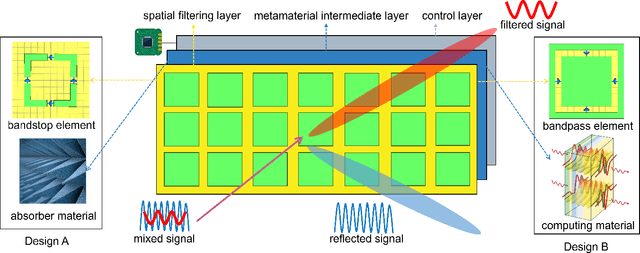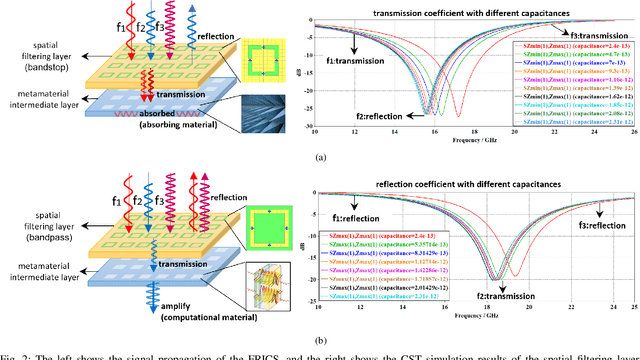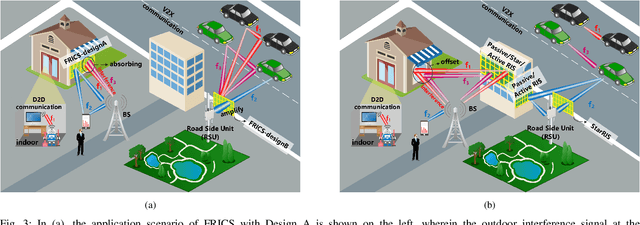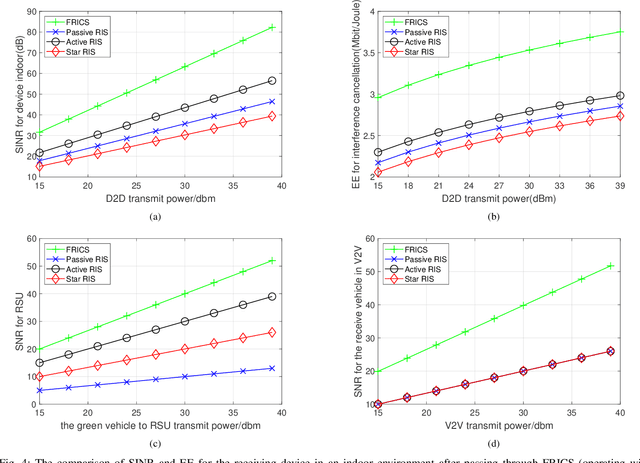Kaining Wang
Dynamical ON-OFF Control with Trajectory Prediction for Multi-RIS Wireless Networks
May 27, 2025Abstract:Reconfigurable intelligent surfaces (RISs) have demonstrated an unparalleled ability to reconfigure wireless environments by dynamically controlling the phase, amplitude, and polarization of impinging waves. However, as nearly passive reflective metasurfaces, RISs may not distinguish between desired and interference signals, which can lead to severe spectrum pollution and even affect performance negatively. In particular, in large-scale networks, the signal-to-interference-plus-noise ratio (SINR) at the receiving node can be degraded due to excessive interference reflected from the RIS. To overcome this fundamental limitation, we propose in this paper a trajectory prediction-based dynamical control algorithm (TPC) for anticipating RIS ON-OFF states sequence, integrating a long-short-term-memory (LSTM) scheme to predict user trajectories. In particular, through a codebook-based algorithm, the RIS controller adaptively coordinates the configuration of the RIS elements to maximize the received SINR. Our simulation results demonstrate the superiority of the proposed TPC method over various system settings.
Filtering Reconfigurable Intelligent Computational Surface for RF Spectrum Purification
Jun 26, 2024



Abstract:The increasing demand for communication is degrading the electromagnetic (EM) transmission environment due to severe EM interference, significantly reducing the efficiency of the radio frequency (RF) spectrum. Metasurfaces, a promising technology for controlling desired EM waves, have recently received significant attention from both academia and industry. However, the potential impact of out-of-band signals has been largely overlooked, leading to RF spectrum pollution and degradation of wireless transmissions. To address this issue, we propose a novel surface structure called the Filtering Reconfigurable Intelligent Computational Surface (FRICS). We introduce two types of FRICS structures: one that dynamically reflects resonance band signals through a tunable spatial filter while absorbing out-of-band signals using metamaterials and the other one that dynamically amplifies in-band signals using computational metamaterials while reflecting out-of-band signals. To evaluate the performance of FRICS, we implement it in device-to-device (D2D) communication and vehicular-to-everything (V2X) scenarios. The experiments demonstrate the superiority of FRICS in signal-to-interference-noise ratio (SINR) and energy efficiency (EE). Finally, we discuss the critical challenges faced and promising techniques for implementing FRICS in future wireless systems.
AI-Empowered Multiple Access for 6G: A Survey of Spectrum Sensing, Protocol Designs, and Optimizations
Jun 19, 2024Abstract:With the rapidly increasing number of bandwidth-intensive terminals capable of intelligent computing and communication, such as smart devices equipped with shallow neural network models, the complexity of multiple access for these intelligent terminals is increasing due to the dynamic network environment and ubiquitous connectivity in 6G systems. Traditional multiple access (MA) design and optimization methods are gradually losing ground to artificial intelligence (AI) techniques that have proven their superiority in handling complexity. AI-empowered MA and its optimization strategies aimed at achieving high Quality-of-Service (QoS) are attracting more attention, especially in the area of latency-sensitive applications in 6G systems. In this work, we aim to: 1) present the development and comparative evaluation of AI-enabled MA; 2) provide a timely survey focusing on spectrum sensing, protocol design, and optimization for AI-empowered MA; and 3) explore the potential use cases of AI-empowered MA in the typical application scenarios within 6G systems. Specifically, we first present a unified framework of AI-empowered MA for 6G systems by incorporating various promising machine learning techniques in spectrum sensing, resource allocation, MA protocol design, and optimization. We then introduce AI-empowered MA spectrum sensing related to spectrum sharing and spectrum interference management. Next, we discuss the AI-empowered MA protocol designs and implementation methods by reviewing and comparing the state-of-the-art, and we further explore the optimization algorithms related to dynamic resource management, parameter adjustment, and access scheme switching. Finally, we discuss the current challenges, point out open issues, and outline potential future research directions in this field.
 Add to Chrome
Add to Chrome Add to Firefox
Add to Firefox Add to Edge
Add to Edge